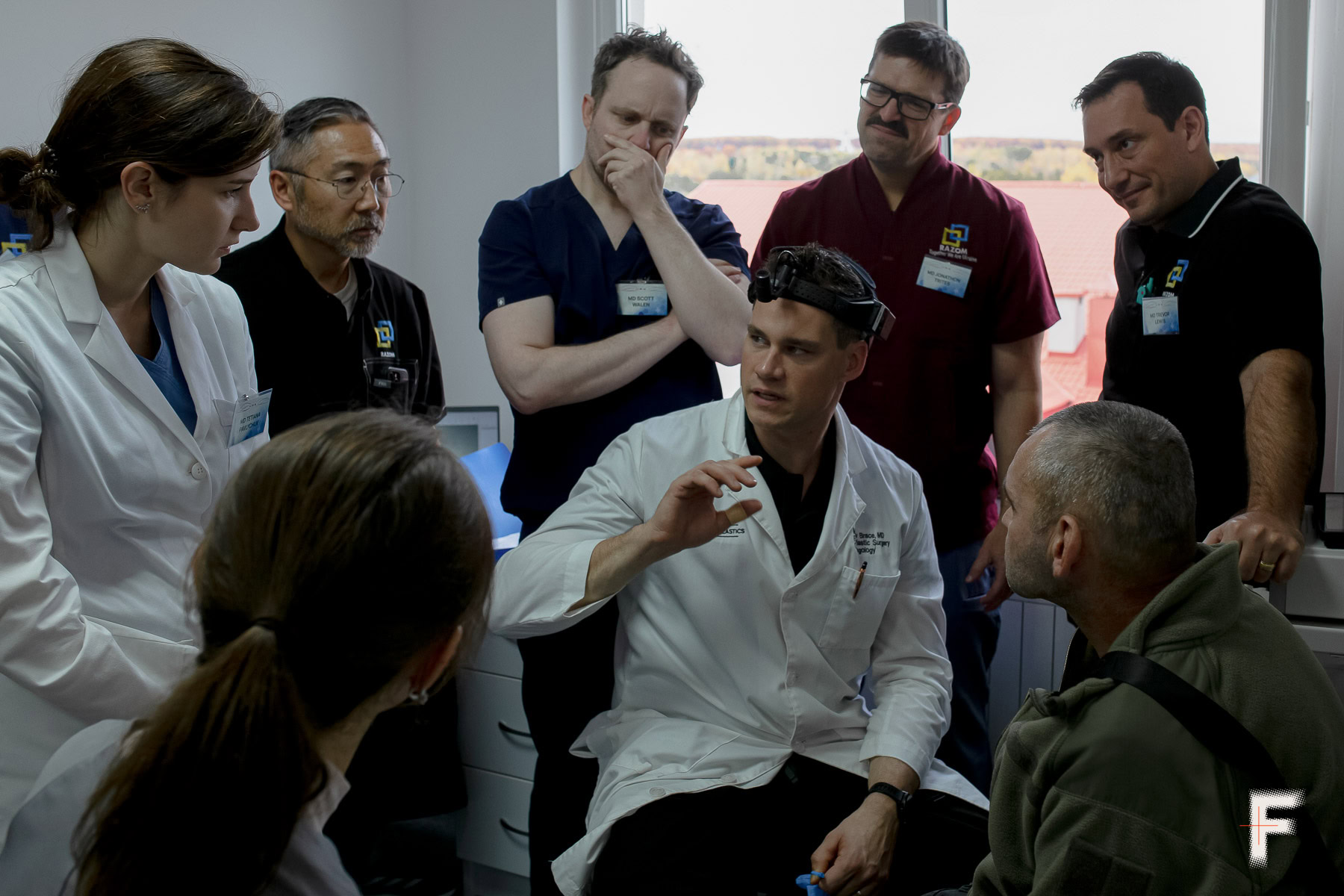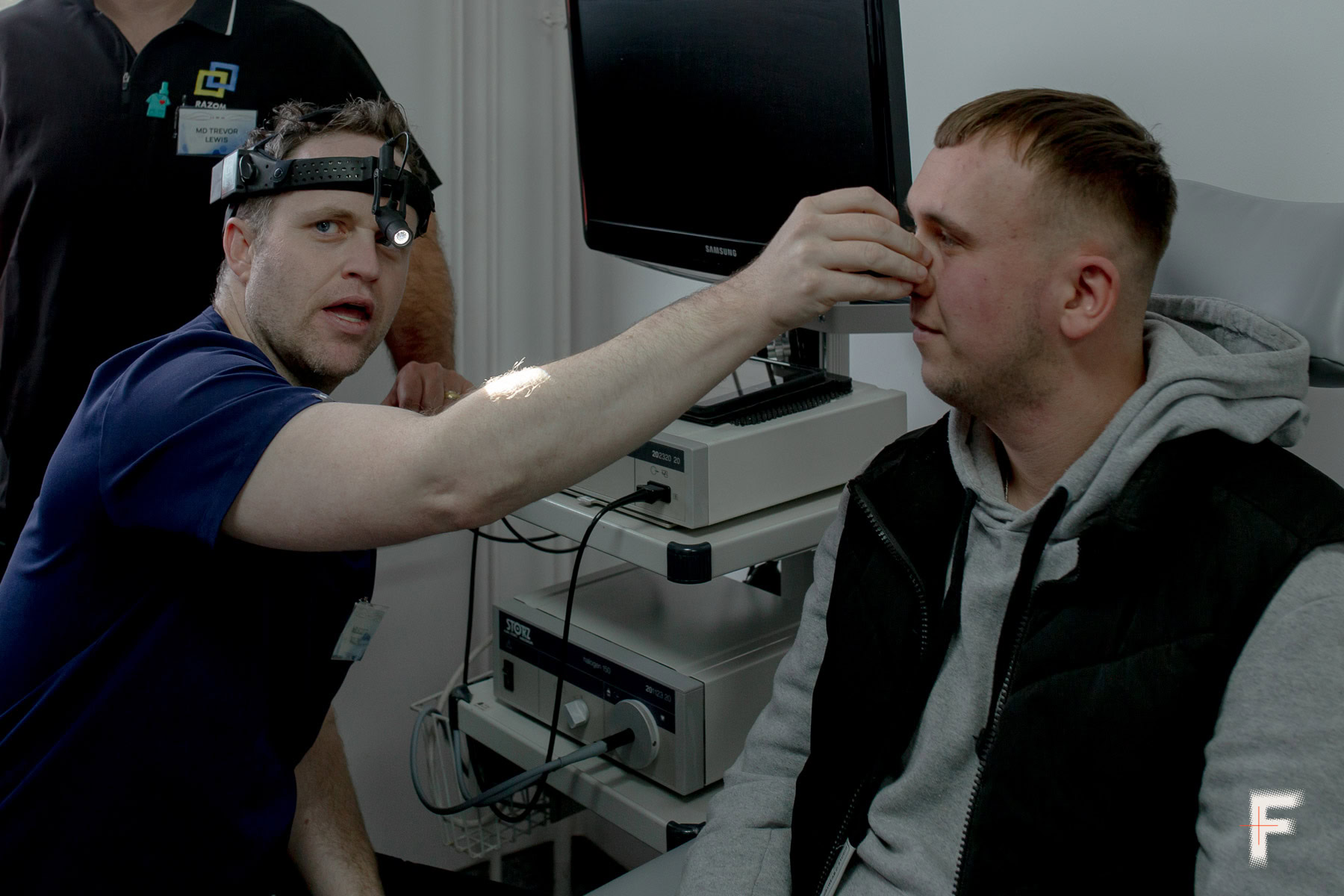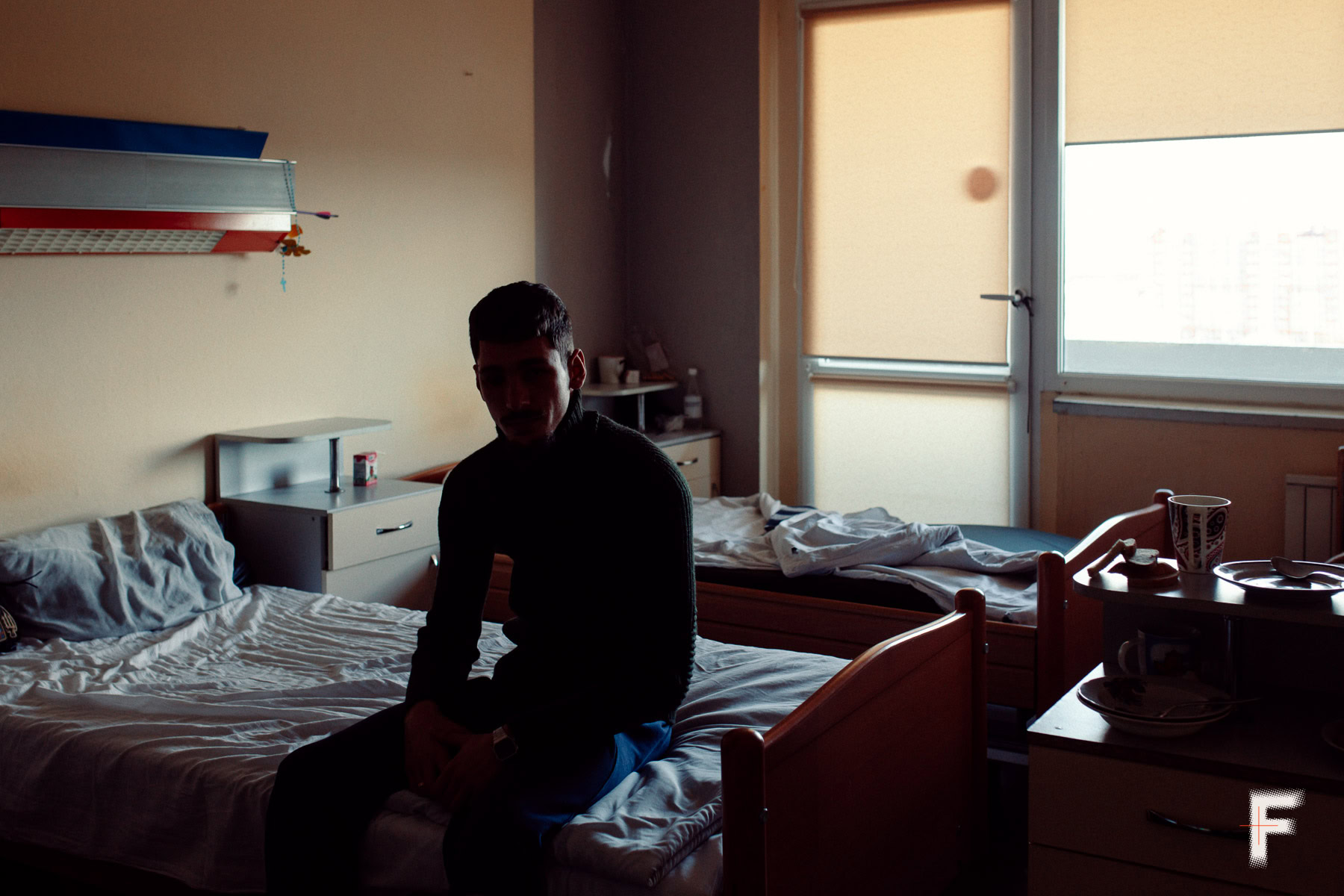

Facing the future: how an international team of surgeons is saving the faces of soldiers
Surgeons from the US and Canada came to Ukraine to work alongside their Ukrainian colleagues, operating on soldiers with severe facial injuries. Over five days, surgeons perform thirty procedures on people injured in the war. This Frontliner article explores how surgeons are restoring the appearance and function of their faces.
The hallways of the Ivano-Frankivsk Clinical Hospital are filled with a restless buzz: patients are anxious and agitated, glancing at the doctors with questioning eyes while pretending not to notice the cameras and media crews. Examinations are held in a room at the end of the hallway. One by one, patients make their way to enter it, pushing their way through a crowd of journalists and doctors observing the process. Doctors assess the injuries, ask patients to press their lips together and then smile, shine lights on their faces, and question them about their wounds. They consult with each other, offer various options, and explain the details of the procedure.
As the examinations continue, the doctors begin to grow comfortable with one another, exchanging jokes as they work. They communicate through an interpreter and coordinate the distribution of patients. They come from different countries and have different specialties, yet something has brought them together here today.
New eyelid transplanted from another part of the body
Oleksii Tomashun is 22 years old, four of which he spent in the army. He is married and has a son who is a year and a half old. He has spent nearly all of his adult life on deployment in the Donetsk region. There, near New York, he was wounded in the head and on the left side of his body: shoulder, arm, and leg. He does not want to talk about it; his comrade was killed and his body remains there. After being wounded, he stayed in the army, now serving in the rear, “going to work as if it were just a regular office job.” Oleksii has a broken facial bone and is missing his right eye, which has been replaced with a prosthesis. The right side of his face is also scarred.
Oleksii needs to have an eyelid made from skin that will be taken from another part of his body. He jokes that the shrapnel in his head will prevent him from getting through airport security.
When asked where he would like to travel, Oleksiy says he wants to go to Spain, to the beach. He talks about how he imagines Europe – as a different world, one without the problems we face here, where life feels completely different.
The story behind the face the future mission
Surgeons from Canada and the US have arrived in Ukraine for the sixth time with the Face the Future mission, to carry out reconstructive surgery to military personnel and civilians impacted by the war. Foreign surgeons came to Ukraine for the first time in September 2022, in Lviv. At that time, the initiative was known as the Face to Face mission. Back then, Natalia Komashko, an otolaryngologist at the Ivano-Frankivsk Clinical Hospital and head of the mission, didn’t know if everything would fall into place. Early on, having no prior experience made it hard to get the process underway – the doctors didn’t know one another, were unclear about the types of injuries, and weren’t certain they could handle the workload.
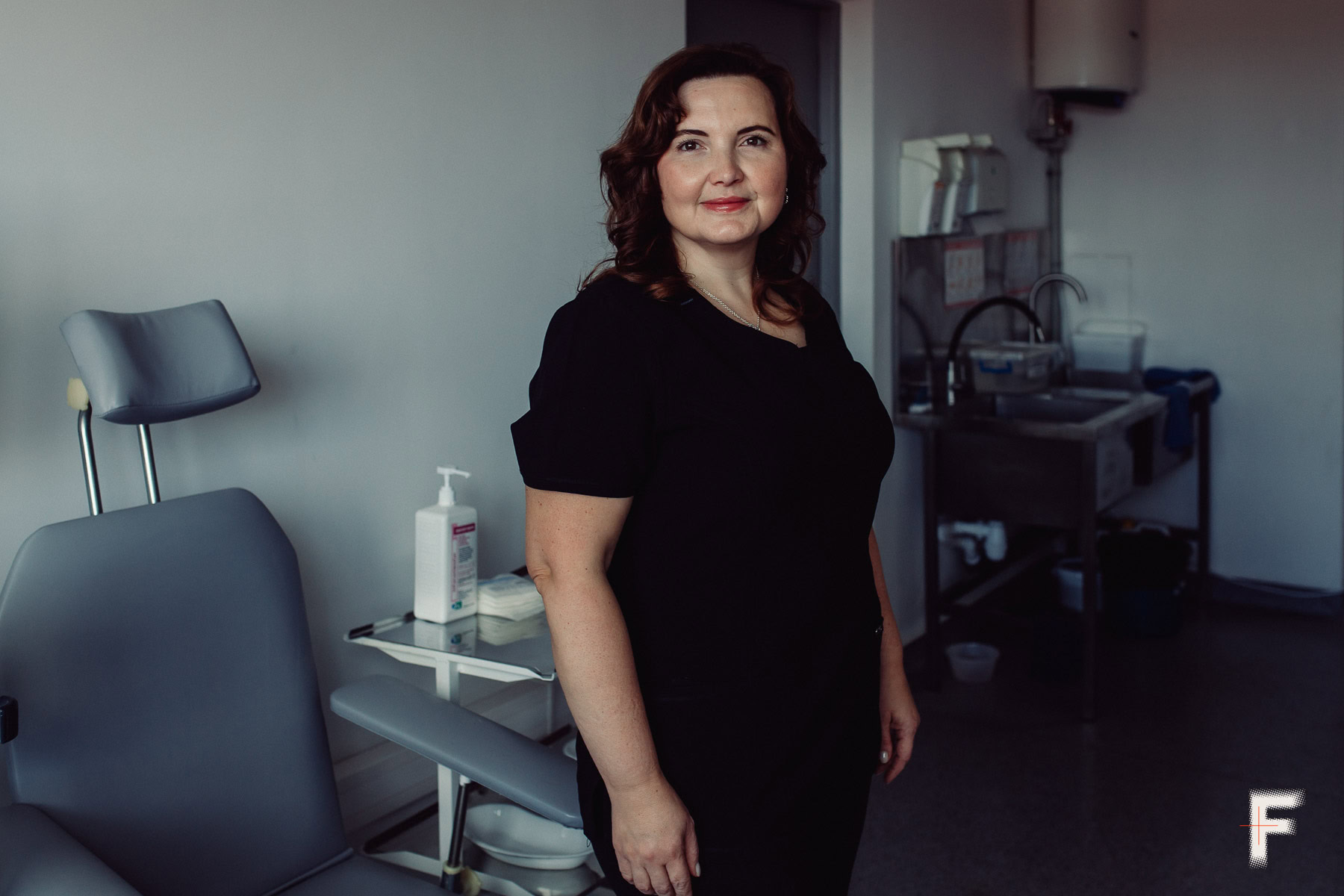

“My brother played a big role here. He volunteered from the very beginning. I had doubts whether to take it on [the mission] or not. He said, ‘Look, Natalia, it could be me.’ That was the deciding factor,” says Komashko.
During that mission, 35 people underwent surgery, and once the initiative ended, new patients began applying in large numbers. The team organized the data, consulted with colleagues, and developed treatment plans. Also, during that time the Ukrainian team met Dr. Peter Adamson.
Four years of rebuilding a face
Ruslan is 25 years old (his last name has been withheld for security reasons) and has been in the army since 2019. He jokes with his roommate about how to escape the journalists: if he goes out the window, he says, he’ll have to become a paratrooper.
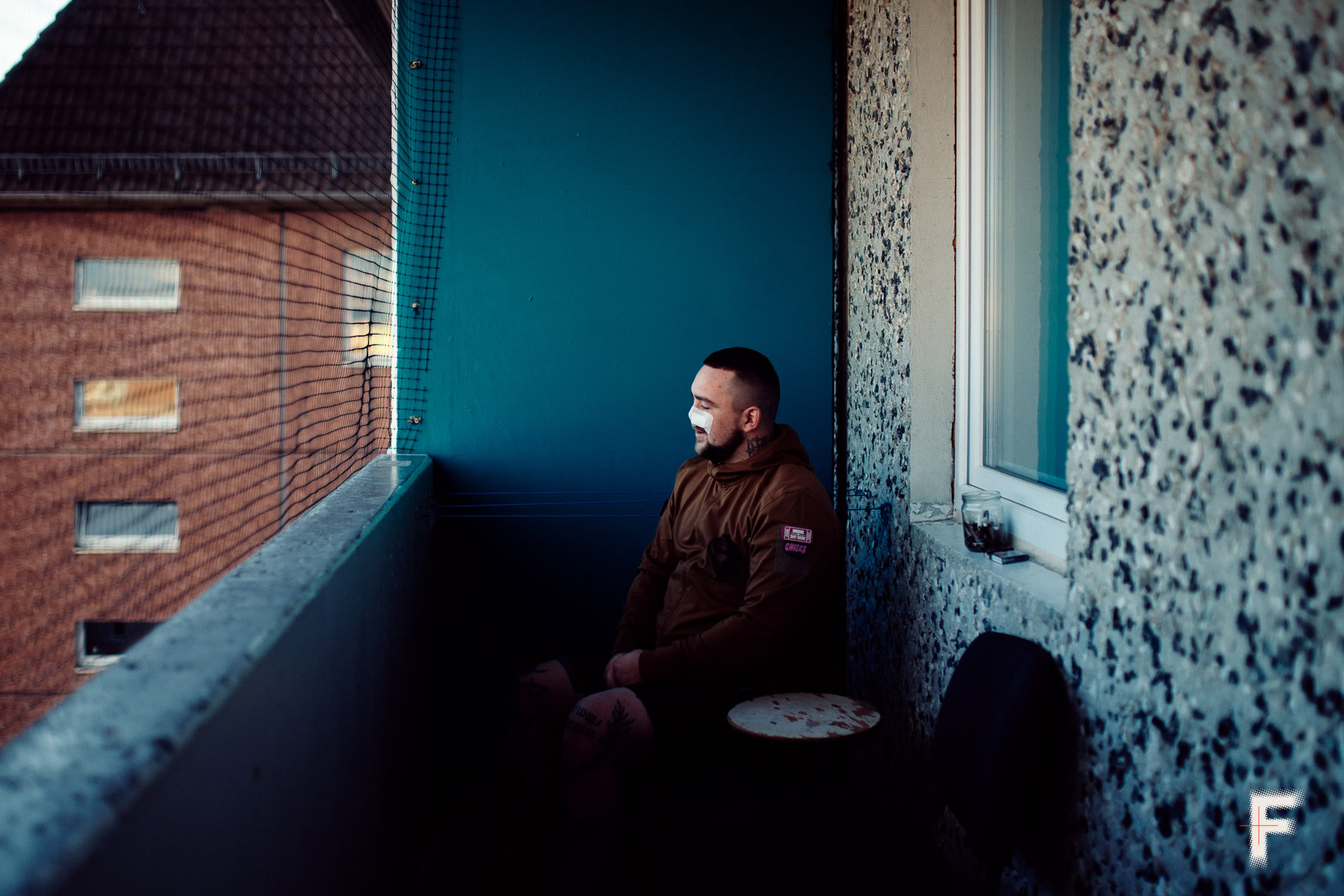

He sustained injuries to the center of his face in Izium in March 2022. His nose is now covered with a bandage, leaving only the surrounding scars visible. He had to evacuate himself, since his comrades were unable to reach him.
Still, despite his injuries, he continues to fight. This marks his third time receiving treatment through the mission. He says that half of his face was gone. The doctors lifted the wing of his nose, restored his breathing, and his face was almost completely restored to how it looked before the injury. Ruslan considers it pointless to make plans for the future. When asked about his dreams, he says he has none. Then he adds that he would like to start a business. He laughs, saying it’s not the usual choice – he wants to start a nightclub.
Who takes part in the missions
The first Face the Future mission took place in July 2023. Even on their sixth mission to Ukraine, the surgeons have plenty of work to do. As patient numbers rise, it becomes essential to pass on skills and experience, enabling Ukrainian surgeons to carry out facial reconstructions themselves.
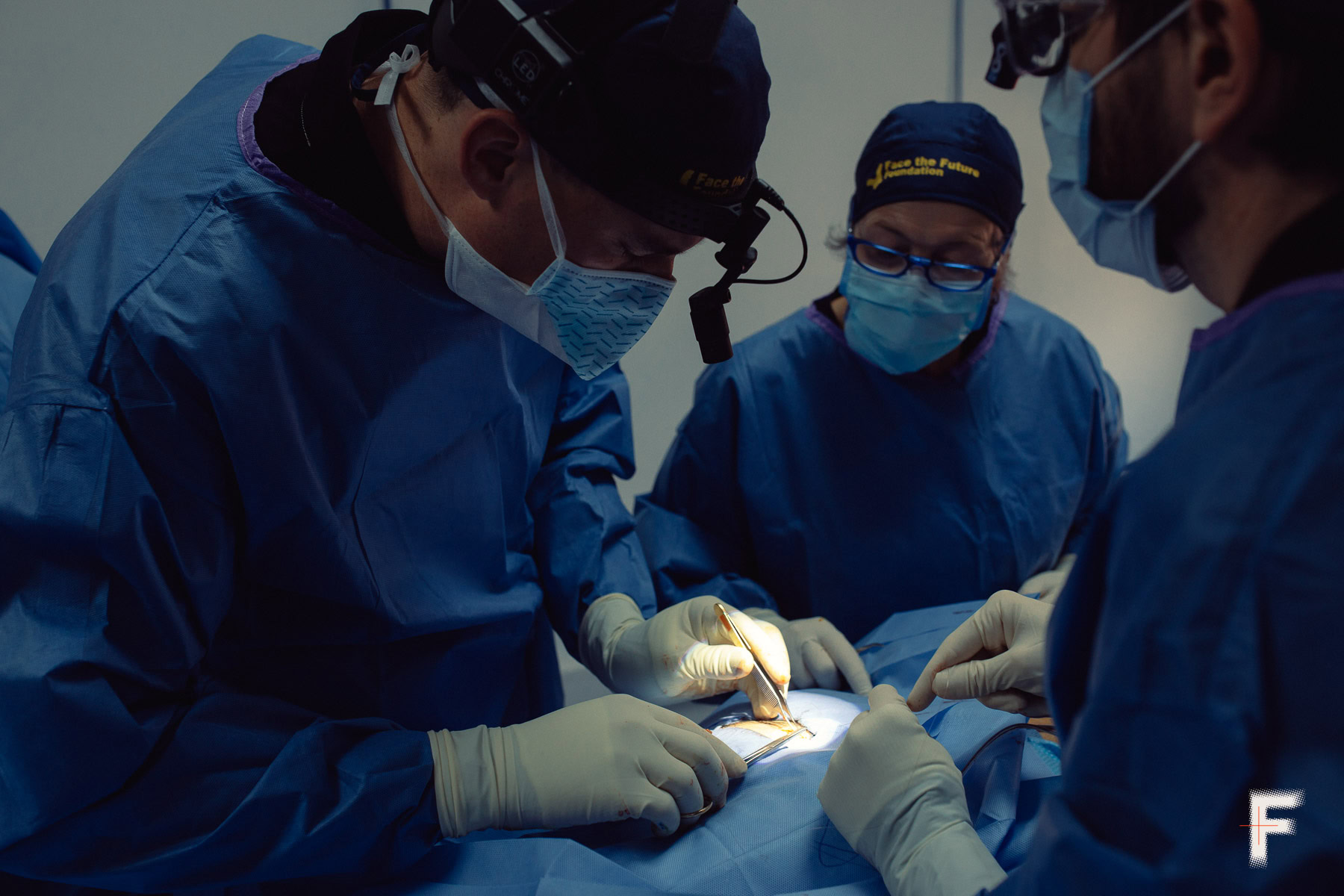

“It was important not to keep this knowledge confined to a single hospital. That’s why we invited colleagues from Odesa and Kyiv who expressed interest to join the mission,” says Natalia Komashko.
Working with additional hospitals has not only brought more doctors into the mission but also made treatment more accessible for patients, who no longer have to travel only to Ivano-Frankivsk. Collaboration between hospitals in different cities also allows for the exchange of experience and ensures that work can continue even when American specialists are not present.
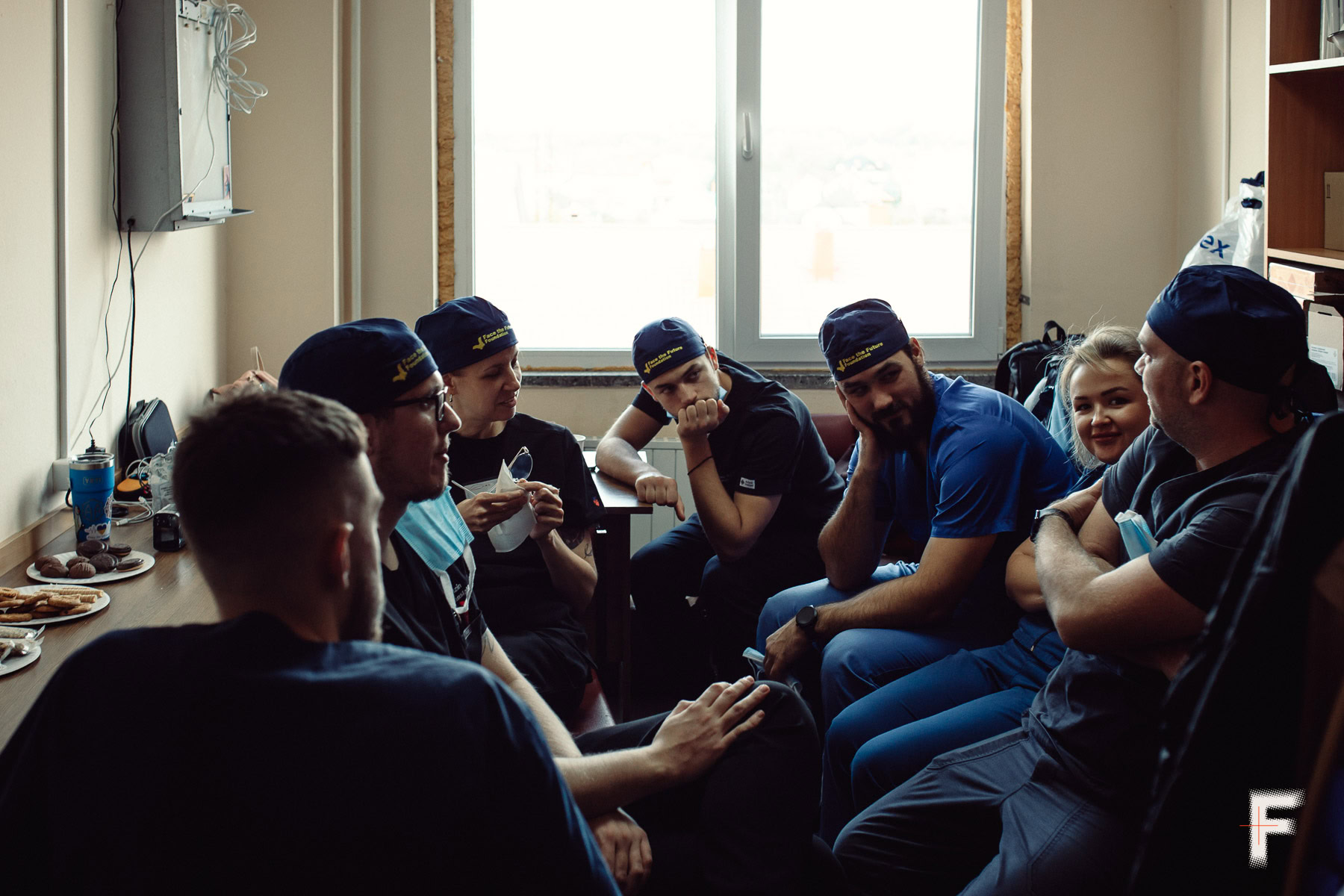

Overall, Face the Future operates across multiple areas of focus, each dedicated to a specific type of surgeries. Fifteen medical professionals from Kyiv, doctors, nurses, and interns, are currently involved in the mission.
A lost eye and an occupied home
Serhii Kotelnikov is 23 years old. He is from the Kherson region and signed a contract eight months before Russia’s full-scale invasion of Ukraine. It is difficult for Serhii to remember the past. His injuries caused memory loss, and it was only after extensive rehabilitation that his memories started coming back. It took him three months after being wounded to start speaking again, and he had to relearn words and letters.
He is here due to the lasting visible effects of his injuries – his left eye is gone, and his eyebrow bears scars. Just as it is difficult for Serhii to talk about his past, he also finds it hard to speak about his dreams for the future.
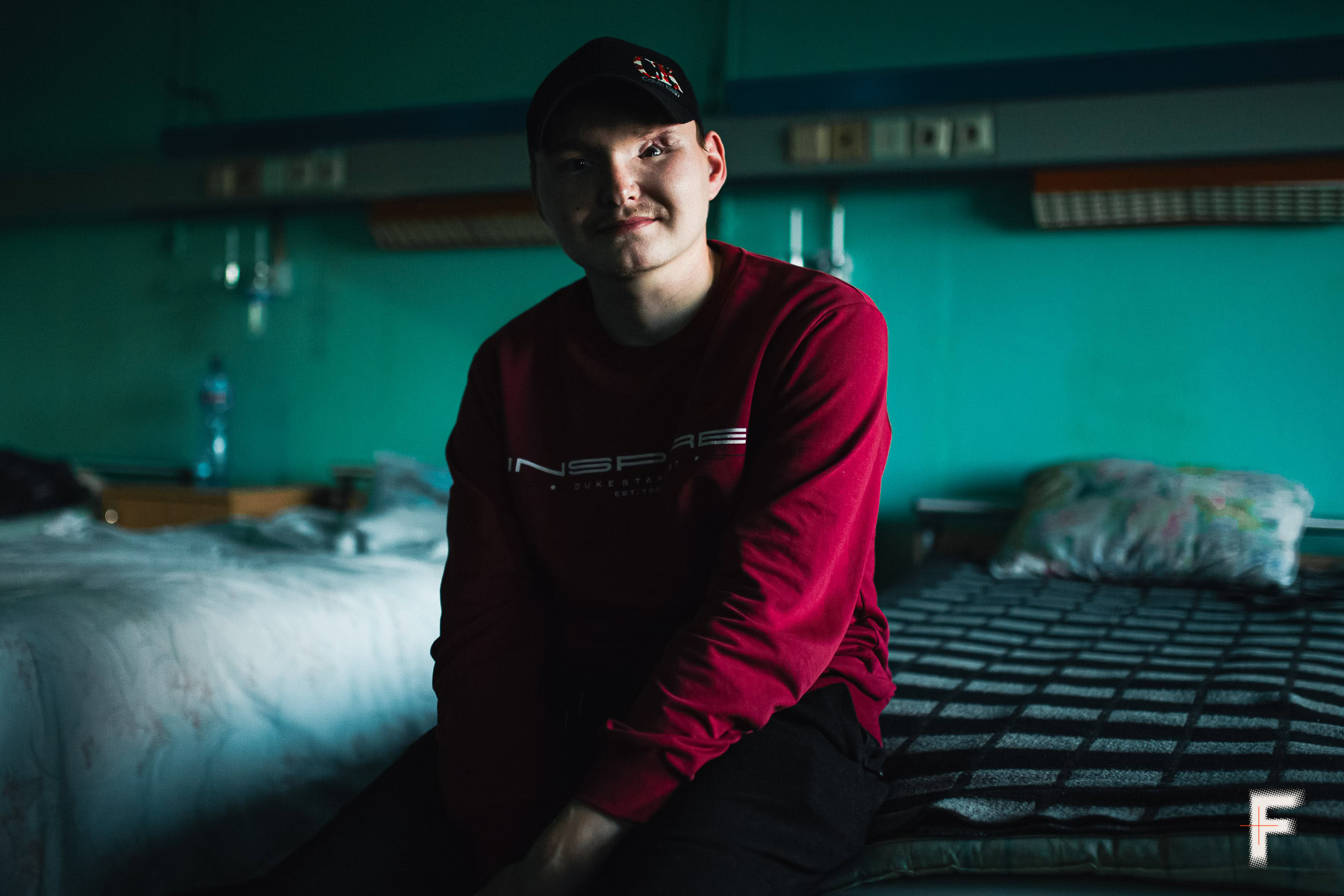

“I wish I could go home. But that won’t happen,” he sighs, as his home lies now in the occupied territories.
Exchange of experience and training
The mission has become a hub for exchanging experience. Ukrainian doctors specialize in injuries from mines and explosions, whereas American and Canadian surgeons have experience with injuries from vehicle accidents and extensive knowledge of reconstructive surgery. Doctors work together, observing each other’s techniques. and performing complex, multi-stage operations. They can perform complex, multi-stage operations and work on cases that would be impossible to handle separately.


Cooperation creates opportunities not only in the operating room but also in education. The experience doctors gain extends beyond their offices, serving as material for teaching. The team organizes workshops and conferences.
“The main purpose of coming here, beyond helping the soldiers, is to support the development of Ukraine’s healthcare system. We start by teaching and training Ukrainian surgeons, sharing our knowledge and experience with them. Equally important is that, as we share our expertise, they also share theirs,” says Peter Adamson, president and founder of the Face the Future Foundation. He has been organizing international surgical missions since 1996.


Dr. Adamson says he decided to create a mission to help Ukraine because Ukrainian soldiers are defending not only their country but also the way of life he values on another continent.
“Some of us strongly believe in Western democracy and Western values. It was very difficult to see the tragedy of the Ukrainian soldiers and the Ukrainian people. They are very strong and are defending not only Ukraine, but also the values and way of life of North America. I am not a soldier, I could not go to war. But as a surgeon… we have surgeons, nurses, and anesthesiologists who can truly help treat soldiers. Just as the soldiers do their part in serving humanity, we carry out this mission to serve them.” says the Canadian mission leader.
Seven hours in the operating room
The operating room is full of people. There is still time to prepare for the operation, yet the restlessness in the room is unmistakable. People are constantly coming in and out, bringing supplies and talking among themselves.
The senior, more experienced doctors are a little better at controlling their emotions, while the junior doctors joke around more and are visibly nervous. Finally, the patient enters – Kherson region native, Serhii Kotelnikov.
This will be a complex reconstruction of the eye and nose area. According to the plan, the operation will last more than five hours.The team of foreign and Ukrainian doctors is joined in the room by nurses, journalists, and other medical staff. The more complex the case, the more people observe the operation – so opening the operating room door reveals only a dozen white-coated backs.
Serhii lies down on the operating table and is given anesthesia. The next few hours will be challenging. The surgeons reconstruct the bone around his eye, remove a portion of his skull to be replaced with an implant, and adjust the position of his eyelid – all these tasks are complex and time-consuming.


Four surgeons from different specialties are working together: Raymond Cho and Scott Walen from the US, Jonathan Traits from Canada, and Ukrainian surgeon Tetiana Pavlychuk. The operation was scheduled for five hours but ultimately took seven. In the end, it was successful, making all the effort worthwhile.
Text: Yuliia Huz
Photos: Anna Zubenko
Adapted: Irena Zaburanna
Read more — Where lives are saved: a stabilization point in the Donetsk region
